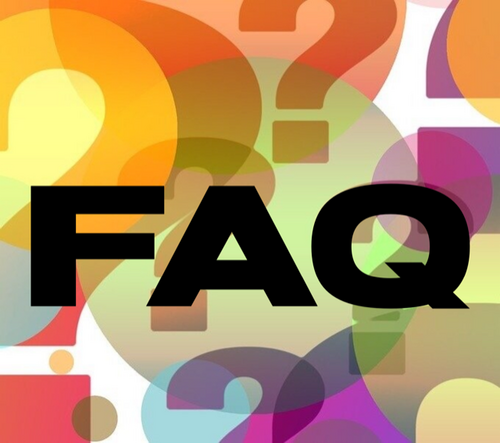by Carolyn Edlund
If you’re not making sales through your art website, take a look at the user experience. Do visitors understand your terms and policies and how to make a purchase?

In my business, I review a lot of artist websites. It’s astonishing how many of them provide little or no information that shoppers need in order to confidently buy from the artist. Creating a page on your site titled “FAQ” or “How to Buy” is an effective way to address this need. Do you have one on your own website?
Let’s break down the contents of a successful FAQ page. The following topics are important to shoppers who want to know what to expect. This outlines what you offer, and also their obligations.
Shipping
People who shop online are understandably concerned about the cost of shipping. Do you offer free shipping on purchases? Do you charge a flat rate? Or will shipping be calculated on each order according to destination? Sharing this information up front will prepare your customer for the checkout process. Sticker shock on shipping costs is a major cause of abandoned carts.
Consider whether you are willing to ship your art to different countries, which often involves higher freight and customs fees. If not, you may want to take orders from domestic customers only, and state this on your FAQ page.
Another major concern is the shipper you will use, whether it’s a carrier like Fedex or UPS, the postal service, or a professional art shipper. How will this affect delivery? Will delivery include installation?
Buyers also want to know about turnaround times. How quickly can you ship? When should they expect to receive their order? Are you able to ship to a third party address? If it is a gift, will you wrap their purchase or add a card?
Print on demand orders ship directly from the fulfillment center to the customer. If you offer products using print on demand, make sure you understand the provider’s terms and policies and can communicate this.
Returns
Customers need to know if the item they purchase is returnable, and the conditions around that return. When a buyer is under the impression that their purchase is a “final sale” they may be very hesitant to commit. Is that the impression your website visitors are getting?
Your stated policy should be clear on all aspects of the return process. Does the buyer have one week after receipt of their purchase to initiate a return? Or longer? Do you require that the item be shipped back in the original packaging? Is the cost of return shipping the responsibility of the purchaser? How do they notify you about a return?
Insurance
When considering a purchase, buyers want to know about insurance coverage and how claims for damage or loss are handled. If you use a major shipper, they will have specific policies in place that are outlined on their own websites. Simply state this on your FAQ page and refer them to the shipper’s terms for more information.
Commissions and personalization
Personalization is very popular with online shoppers and can be a major selling point. If you offer this as a service, indicate whether there is an additional charge. This may also affect the returnability of the order.
If you take commissions, include that option on your FAQ page as well. You may even want to have a separate Commissions page on your website which describes the process and invites inquiries with a submission form. Outline any increase in price for a commission, the required deposit, payment schedule, and other terms. Make sure you have a contract ready to present to clients who want to commission artwork from you.
Installation and care
Do you send a “hanging kit” with the purchase of your painting? Can your art be displayed in direct sunlight? Are your handwoven wearables hand washable, or must they be dry cleaned? Any information you share about how to install or care for your work increases the buyer’s understanding, their appreciation for your work, and their level of confidence.
Contact information
One of the worst mistakes I see on an artist’s website is a lack of contact information. If you want to solicit sales, commissions or inquiries from collectors and others, give website visitors a way to easily get in touch with you. Place your email address and phone number on your site where it’s visible and invites contact.
Determine your own customer’s needs
Every artist is different. You may need to provide more or different information on your own FAQ page. An easy way to determine what your customers need to know is to visit retail websites that sell similar products. What information, terms and policies do they share? Do those items also concern your customer?
When website visitors understand what you do and how to buy, they will feel more comfortable with the purchasing process and their own responsibilities. That places you in a position to increase online sales of your art.


Great article Carolyn. Thanks for the concise overview.
Thanks, Merinda!
Great article -I just updated my FAQ page! It is on the footer of my webpage -is that the correct place for it?
Hi Sharon, your FAQ page should be easily found and accessed so anyone shopping on your site would be able to find it while considering your work for sale. I would place the link to it in the menu at the top of your page.
Carolyn, thanks once again for all of your helpful guidance! Maureen
You are very welcome. I hope this makes a difference on your art website!